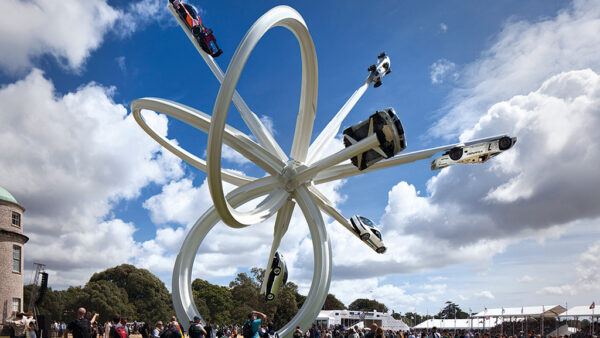
Gold winner: The V&A’s Sackler Courtyard with glazed cafe pavilion (Image: Diane Auckland)
CMYA 2018 WINNER: Digging deep at the V&A
Project managing the Victoria & Albert Museum’s new extension – which featured a 16m deep basement and the largest columnless gallery in Europe – earned Neil Lock of Wates the accolade of Construction Manager of the Year 2018, the 40th year of the industry’s most celebrated awards. CM reports.

Project: V&A Museum, South Kensington, London. Demolition of existing buildings and construction of gallery, courtyard and new entrance. Gallery works included full-perimeter secant piled wall, excavation of 16m-deep basement, and installation of a 40m full-width truss to create the largest columnless gallery in Europe. Completed in 166 weeks.
Contract: GC Works 2011
Value: Tender £29m, final contract £38m
Neil Lock is Construction Manager of the Year 2018 after successfully delivering a technically complicated, high-profile and ultimately visually stunning project at one of the world’s most famous museums.
The overall winner of the Chartered Institute of Building’s annual awards, in its 40th edition, was project manager for an extension of the Victoria & Albert Museum, London.
The new gallery, courtyard space and entrance on Exhibition Road in South Kensington were delivered within the historic facades of the museum.
And this was not just any extension. It required a vast excavation below the museum for the colossal 1,100 sq m columnless basement gallery.
The logistical challenges alone were daunting, involving 6,000 lorry movements through a single entrance onto a major London road.

The new extension was built only metres (Hufton+Crow) from the Victorian buildings

BIM visualisation of the steel trusses (Hailee Kukura)

The columnless gallery interior (Hufton+Crow)
The 16m-deep basement required a full-perimeter secant wall piled 25m deep, installed just 2m away from priceless artefacts in grade I-listed buildings. Just 20mm of movement for the existing masonry structure was allowed during the basement excavation and 5mm during the piling.
The new basement is the largest columnless gallery in Europe, which meant installation of 40m-long single-span steel trusses weighing 12 tonnes apiece. A structural challenge of a different kind was the outside courtyard cafe created from 5m-wide structural glazing, curved and slotted into an existing stone facade.
Lock overcame all these hurdles while accommodating some 1,000 change requests. He achieved this by building an excellent relationship with the client and professional team.
From the outset, Lock ensured he was close to the client and that all supply chain partners were with him, and understood the key issues and drivers. He brought it all together to deliver a building that any construction manager would be proud to boast as a legacy.
SILVER: Jon Staley – Kier

Silver winner: Aperture Building, Greenwich Peninsula, London

Project: Aperture Building, Greenwich Peninsula, London. Construction of 2,200 sq m mixed-use building, with a cafe and deli, estate management suite, day nursery, community spaces and gym facilities. Completed in 74 weeks.
Contract: JCT 2011, design and build
Value: Tender £10m, final contract £11m
Jon Staley’s successful delivery of this Greenwich mixed-use scheme included some clever rejigging of design, methodology and sequencing to keep the project on programme. He had to switch the tower crane location because of a crane radius clash with an adjacent site and redesigned its foundation pads to sit below the ground floor slab due to a below-ground obstruction.
Other finalists
Malcolm Boyd MCIOB, BAM Construct UK – V&A Dundee
Adrian Coleman MCIOB, Willmott Dixon, Lincoln Transport Hub
Paul Limb MCIOB, Morgan Sindall – Civil Nuclear Constabulary Training Facility, Calder Bridge, Cumbria
David McMahon, CCG Scotland – Scottish War Blinded Hawkhead Centre, Paisley
When a commercial kitchen was added, leaving the power infrastructure unable to take the extra load, Staley converted the temporary builders’ supply to a permanent supply for the building.
The pronounced vertical fins posed the biggest design challenge. Staley proposed a unique cladding system which used the same profiles for both structural mullions and the fins.
The mullions sit externally, supporting the glass and solid panels on a series of toggle fixings and supports, so that the glazing floats between the building line and the mullions. This required careful coordination of design, manufacture and installation with the specialist supplier, building in allowances for approval processes.
Ultimately, Staley delivered an unprecedented UK installation to the highest technical and aesthetic standard without breaching the programme or the budget.
Category sponsored by












Comments are closed.